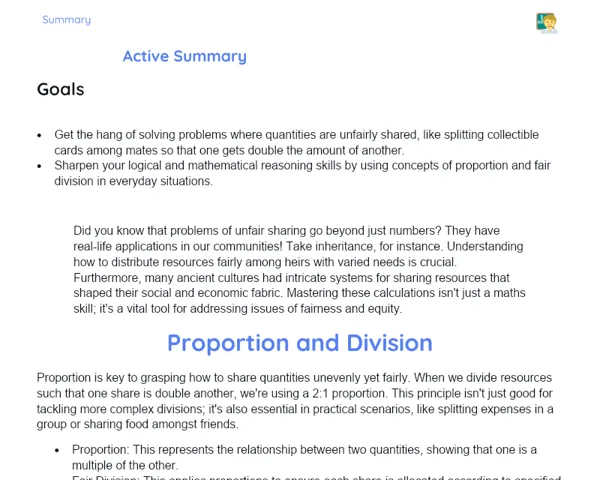Summary Tradisional | Operations: Decimals
Contextualization
Working with decimal numbers is a vital aspect of mathematics that we encounter daily. We see decimals in many everyday scenarios, like when we’re buying groceries, measuring ingredients for baking, or calculating distances and travel times. For instance, when purchasing items priced at R2.50 or R3.75, it’s essential to know how to add, subtract, multiply, and divide these amounts to manage our budgets efficiently.
Additionally, having a solid understanding of decimal operations is critical in various professional areas such as engineering, healthcare, and finance, where precision in calculations is paramount. Mastering these operations enables us to tackle problems more accurately, whether in our personal lives or professional settings. In this lesson, we will delve into how to carry out these operations and apply this knowledge in real-life situations, helping you develop vital mathematical skills.
To Remember!
Adding Decimal Numbers
Adding decimal numbers is a basic operation that requires us to line up the numbers at the decimal point and then sum each column of digits from right to left. It’s crucial to ensure that our decimal places are lined up correctly to avoid any mistakes in our total. For example, when adding 2.30 and 1.45, we line them up as 2.30 + 1.45.
Once aligned, we proceed to add each column, starting from the right. If a column adds up to more than 9, we carry the extra digit to the column on the left. This continues until all columns are added up.
Adding decimal numbers is common in daily life, like when calculating the total cost of groceries. Knowing how to do this accurately is vital for managing personal finances and solving math problems correctly.
-
Align decimal numbers by the decimal point.
-
Add each column of digits starting from the right.
-
Carry over any extra digit to the next column on the left when needed.
Subtracting Decimal Numbers
Subtracting decimal numbers follows a similar method to addition. We first line up the numbers at the decimal point before we start. If the number we’re subtracting has more decimal places, we need to add zeros at the end of the larger number to match the decimal places. For instance, when subtracting 2.78 from 5.60, we set it up as 5.60 - 2.78.
During the subtraction, we may need to ‘borrow’ from the next column on the left if the current column’s digit is smaller than the one being subtracted. This helps ensure our calculation is correct and avoids mistakes in the final answer.
Subtraction of decimal numbers is useful in everyday situations, like calculating change or adjusting quantities in recipes. Grasping this concept is crucial for accurate calculations in our daily activities.
-
Align decimal numbers by the decimal point.
-
Add zeros to match the number of decimal places.
-
Borrow from the column on the left as required.
Multiplying Decimal Numbers
To multiply decimal numbers, we first ignore the decimal points and treat them as whole numbers. After finding the product, we count how many decimal places were in the original numbers and adjust the decimal point in our final answer accordingly. For instance, if we multiply 3.2 by 4.5, we multiply 32 by 45 to get 1440. Since each factor has one decimal place, we move the decimal point in the result to get 14.40.
This approach ensures that the decimal point in our product remains accurate, preserving the reliability of our calculations. It's essential to practice this to become comfortable with adjusting decimal places in results.
Multiplying decimal numbers is common in contexts like calculating areas, volumes, or in financial transactions. Precise multiplication is key to getting correct and dependable results across different scenarios.
-
Temporarily ignore decimal points and multiply as if they are whole numbers.
-
Count the total number of decimal places in the original numbers.
-
Adjust the decimal point in the final product based on the number of decimal places.
Dividing Decimal Numbers
When dividing decimal numbers, we first need to adjust the divisor to make it a whole number by moving its decimal point to the right. We do the same with the dividend. For example, when dividing 12.5 by 0.5, we’d move the decimal of the divisor one place to the right to make it 5, and do the same with the dividend, turning 12.5 into 125. Then we can proceed with the division normally.
This method ensures accurate division while keeping the decimal point in the right place in our answer. Practicing this technique is valuable for developing skills to handle divisions with decimal numbers.
Dividing decimal numbers is often necessary in everyday situations, such as splitting a restaurant bill among friends or figuring out prices per unit of products. Knowing how to execute this operation effectively is essential for resolving everyday issues accurately.
-
Shift the decimal point of the divisor to create a whole number.
-
Make sure the dividend receives the same decimal point movement.
-
Perform the division normally after making the adjustments.
Key Terms
-
Decimal Numbers: Numbers consisting of a whole part and a fractional part, separated by a decimal point.
-
Addition: A mathematical operation that combines two or more numbers to find their total.
-
Subtraction: A mathematical operation that determines the difference between two numbers.
-
Multiplication: A mathematical operation that results in the product of two or more numbers.
-
Division: A mathematical operation that yields the quotient of one number divided by another.
Important Conclusions
In this lesson, we examined operations with decimal numbers, including addition, subtraction, multiplication, and division. Each operation was unpacked thoroughly with practical examples to aid student understanding. Addition and subtraction required us to align the numbers carefully, while for multiplication and division, specific adjustments were made to keep the precision of decimal places intact.
The significance of mastering these operations is evident in a variety of everyday tasks, like shopping, calculating discounts, measuring ingredients, or managing finances. Additionally, these skills are crucial in many professional fields where mathematical accuracy is required.
Students are encouraged to continue practicing these operations, as familiarity with decimal numbers is fundamental for effectively solving everyday problems. With regular practice, students will build their confidence and capability to apply these concepts in real-world scenarios.
Study Tips
-
Practice decimal operations regularly by tackling everyday problems, such as adding up a shopping list or splitting a bill at a restaurant.
-
Utilise online resources, such as tutorial videos and math simulators, to reinforce your understanding of the methods discussed in class.
-
Form study groups with classmates to collaborate and solve decimal-related problems together, promoting knowledge sharing and problem-solving strategies.



